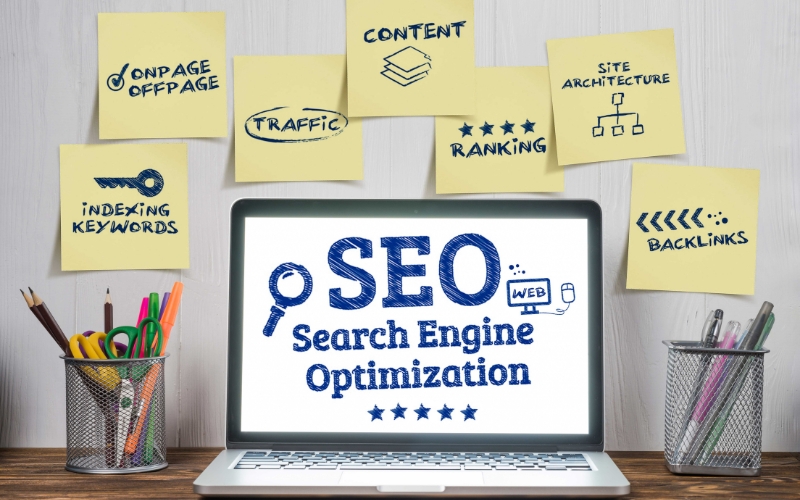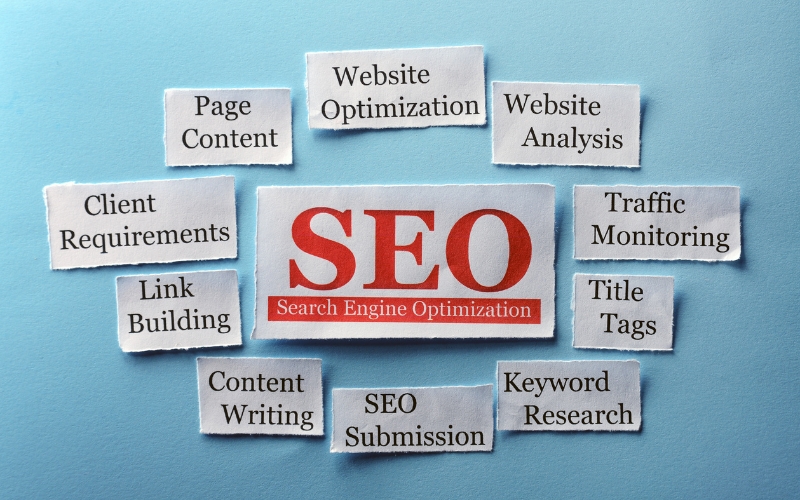
In today’s competitive digital landscape, technical SEO is a critical element for ensuring that a website is properly optimized for search engines. It goes beyond just content creation and link building by focusing on the technical aspects of a website that impact how search engines crawl, index, and render a site. By addressing key technical issues such as site structure, crawlability, mobile optimization, and more, businesses can enhance their website’s performance, visibility, and ultimately, their rankings in search engine results pages (SERPs). This article provides an overview of technical SEO and its importance in improving your site’s overall SEO strategy.
Understanding Technical SEO: A Brief Overview

Technical SEO refers to the optimization of a website’s infrastructure to ensure that search engines can crawl, index, and render the site efficiently. Unlike on-page SEO, which focuses on content quality and keyword optimization, or off-page SEO, which deals with backlinks and external signals, technical SEO targets the technical elements that affect a site’s performance and visibility in search results.
At its core, technical SEO ensures that a website meets the technical requirements of search engines like Google. By enhancing these technical elements, a site can improve its crawlability, indexability, and user experience—all of which are critical for ranking well in search engine results pages (SERPs).
For example, a key component of technical SEO is the site’s structure. A well-organized website structure helps search engines understand and index content more easily. Implementing a clear URL structure and creating an XML sitemap are essential steps in making sure all pages are properly crawled. Additionally, optimizing for site speed is another important aspect of technical SEO. Websites that load faster tend to perform better in search rankings, as search engines prioritize sites that provide a seamless user experience.
Technical SEO also plays a vital role in making a site mobile-friendly. With mobile-first indexing becoming a standard, search engines give preference to websites that are optimized for mobile devices. If your site is not responsive or doesn’t display correctly on mobile, it could significantly hurt your rankings.
Moreover, technical SEO supports the efforts of both on-page and off-page SEO. On-page SEO focuses on optimizing content and meta tags, while off-page SEO works to increase backlinks. However, these strategies can be undermined if the technical elements aren’t properly set up. For instance, poor site speed or crawlability issues can hinder search engines from indexing new content or discovering backlinks, ultimately limiting the effectiveness of on-page and off-page SEO strategies.
Key Elements of Technical SEO: Site Structure, Speed, and Mobile Optimization

When it comes to technical SEO, there are several foundational elements that directly influence a website’s ability to rank in search engine results. Among these, site structure, website speed, and mobile optimization are crucial components. These factors not only improve the performance of a site but also enhance the overall user experience, which in turn plays a significant role in boosting rankings.
Site Structure is one of the most important aspects of technical SEO. A well-structured website ensures that search engines can easily crawl and index the content. Proper use of URLs, headings, and internal linking helps create a logical flow for both users and search engines. An intuitive site hierarchy, where content is organized in a way that’s easy to navigate, enables search engines to identify and rank key pages more effectively. Implementing an XML sitemap is also crucial, as it acts as a roadmap for search engine crawlers, ensuring that all important pages are discovered and indexed.
Another critical element of technical SEO is website speed. Page loading speed is an essential factor that affects both user experience and search rankings. Studies have shown that users are less likely to stay on a site that takes more than a few seconds to load, which leads to higher bounce rates and lower engagement. This poor user experience can significantly impact SEO performance. Optimizing images, leveraging browser caching, and minimizing JavaScript are some common strategies to improve website speed. Faster websites are favored by search engines like Google, which prioritize user-friendly experiences. Thus, a fast-loading website is essential not only for improving user experience but also for achieving higher rankings.
Lastly, mobile optimization is increasingly becoming a key component of technical SEO. With mobile-first indexing now the standard for Google, websites that aren’t optimized for mobile devices risk falling behind in search rankings. A mobile-optimized website adjusts seamlessly to different screen sizes and provides a smooth experience on smartphones and tablets. This includes responsive design, fast loading times, and accessible navigation on smaller devices. Websites that are not mobile-friendly will likely be penalized, as Google prioritizes mobile-friendly sites in search results. Ensuring your website is mobile-optimized is no longer optional but a vital part of a successful SEO strategy.
Crawlability and Indexability: Ensuring Search Engines Can Access Your Content

In the world of technical SEO, ensuring that search engines can efficiently crawl and index your website is fundamental to achieving strong visibility in search engine results pages (SERPs). Crawlability refers to the ability of search engines to navigate through the pages of a website, while indexability is the process of search engines storing and organizing that content for ranking. Both of these elements are crucial for improving your site’s presence online.
One of the first steps in ensuring crawlability is to make sure your site’s structure is optimized for search engines. An important tool in this process is the XML sitemap. An XML sitemap is essentially a blueprint of your website, listing all the pages that search engines should crawl. This helps search engines discover content that may otherwise be hard to find. For large websites with many pages, having an updated and correctly configured XML sitemap makes it easier for search engines to index all your content. Without it, some pages may be missed, which can limit your website’s visibility.
Alongside the XML sitemap, another critical element for ensuring crawlability is the robots.txt file. This file provides instructions to search engine crawlers on which pages or sections of your site should be crawled and indexed, and which should not. For example, you may want to block search engines from crawling pages that contain duplicate content or pages meant only for users. A misconfigured robots.txt file, however, can unintentionally block search engines from accessing important pages, potentially harming your site’s indexability and rankings.
Technical SEO also requires an understanding of how search engines read and interpret your content. When a search engine crawler visits your site, it analyzes the HTML, images, JavaScript, and other elements to determine what the page is about. If your site’s code is messy, overly complicated, or contains broken links, this can hinder search engines from accurately understanding the content and indexing it properly. Therefore, optimizing the HTML and using proper heading tags, metadata, and structured data helps ensure that search engines can effectively interpret your content.
In addition, addressing issues like broken links, redirects, and orphan pages (pages that are not linked to from anywhere else on the site) is essential. Fixing these problems ensures that search engines can crawl your entire site and index all valuable content.
Core Web Vitals and Their Role in Technical SEO

In recent years, technical SEO has evolved to place more emphasis on user experience, and one of the key factors driving this shift is Google’s Core Web Vitals. Core Web Vitals are a set of specific performance metrics that measure how users experience the performance of a website. These metrics, introduced by Google in 2020, have become crucial for SEO performance, as they directly influence a site’s ranking in search engine results pages (SERPs).
The three Core Web Vitals—Largest Contentful Paint (LCP), First Input Delay (FID), and Cumulative Layout Shift (CLS)—focus on key aspects of the user experience: load time, interactivity, and visual stability. Together, they help Google determine if a site provides a good experience for its visitors, which is increasingly becoming a ranking factor in SEO.
- Largest Contentful Paint (LCP) measures how quickly the largest visible element on the page loads, such as an image or a text block. A fast LCP, ideally under 2.5 seconds, indicates that users can quickly view the main content of a page. Websites with slower LCP times tend to have higher bounce rates, which can hurt SEO performance. To optimize LCP, it’s essential to prioritize the loading of critical resources, optimize images, and leverage server-side optimizations like caching and CDNs (Content Delivery Networks).
- First Input Delay (FID) tracks the time between a user’s first interaction with a page (like clicking a button or tapping a link) and the browser’s response to that interaction. A low FID, ideally under 100 milliseconds, ensures that the site feels responsive and interactive. Slow FID times can result from JavaScript-heavy websites or slow server responses. Optimizing FID involves reducing the time spent on main-thread tasks and deferring unnecessary JavaScript until after the page has loaded.
- Cumulative Layout Shift (CLS) measures the visual stability of a page. It tracks how much the page’s layout shifts while it’s loading, which can be frustrating for users if elements move unexpectedly. To achieve a good CLS score (less than 0.1), ensure that all images, ads, and fonts have defined sizes and that the layout doesn’t shift while the page loads.
In the context of technical SEO, these Core Web Vitals are crucial for improving user satisfaction, as they measure how easily and quickly users can interact with a website. Websites that provide a smoother, faster, and more stable experience are more likely to rank higher in search results. To optimize these metrics, webmasters should focus on improving server performance, reducing unnecessary resources, and optimizing page elements like images, fonts, and JavaScript. Ultimately, focusing on Core Web Vitals enhances the overall user experience, which leads to better SEO performance and higher rankings.
The Impact of Technical SEO on Site Performance and Rankings

A well-executed technical SEO strategy plays a crucial role in the overall performance and visibility of a website. While content and backlinks are important, technical SEO addresses the foundational elements that ensure your website is easily crawled, indexed, and rendered by search engines. These technical optimizations have a direct impact on site performance, search engine rankings, user engagement, and ultimately, conversions.
One of the most noticeable impacts of technical SEO on site performance is improved page load speed. Search engines, particularly Google, prioritize user experience, and one of the key aspects of user experience is how fast a page loads. Slow loading times not only hurt the rankings but also increase bounce rates and decrease user satisfaction. With technical SEO, elements such as image optimization, caching, and minifying JavaScript can significantly reduce load times, leading to a faster, smoother user experience. This improvement in site speed is a direct contributor to enhanced rankings, as faster websites tend to rank higher in search results.
Additionally, technical SEO enhances a website’s crawlability and indexability, ensuring that search engines can easily discover and index important pages. Proper structuring of URLs, internal linking, and the implementation of XML sitemaps make it easier for search engine bots to crawl the site effectively. When search engines can crawl and index content without obstacles, pages have a higher chance of ranking well. Websites with clean, well-structured code and no broken links or redirects ensure that crawlers can quickly understand and index content, which directly boosts visibility and ranking potential.
Another critical aspect of technical SEO that affects rankings is mobile optimization. With Google’s mobile-first indexing, websites that are not mobile-friendly are penalized, affecting both search rankings and user experience. Technical SEO ensures that a website is responsive, providing a seamless experience across all devices. Mobile-friendly websites have higher chances of ranking well, especially as mobile search traffic continues to increase.
Lastly, technical SEO directly influences user engagement and conversions. A fast, responsive, and well-structured website enhances the user experience, leading to increased engagement. Users are more likely to stay longer on a site that loads quickly and offers easy navigation. As a result, these websites experience lower bounce rates and higher interaction rates, leading to increased conversions, whether that’s completing a purchase, signing up for a newsletter, or submitting a contact form.
Conclusion:
To gain a deeper understanding of technical SEO and its crucial role in enhancing website performance, it’s beneficial to explore additional resources from authoritative sources. For instance, Google’s Webmaster Guidelines provide a comprehensive overview of best practices for optimizing a site’s technical elements, such as site structure, mobile optimization, and crawlability. By following these guidelines, you can ensure that your website meets the technical requirements for ranking well in search engine results.
To sum up, technical SEO is an essential foundation for any successful SEO strategy. It ensures that search engines can easily crawl, index, and rank your website’s content, improving your site’s visibility and user experience. By focusing on key technical elements like site structure, mobile optimization, page speed, and crawlability, you not only boost your search engine rankings but also create a seamless and engaging experience for your visitors. Embracing technical SEO is a smart investment that will pay off with enhanced performance, higher rankings, and greater user satisfaction.
For more details or to discuss your specific SEO requirements, visit our Onsite SEO Services page.

